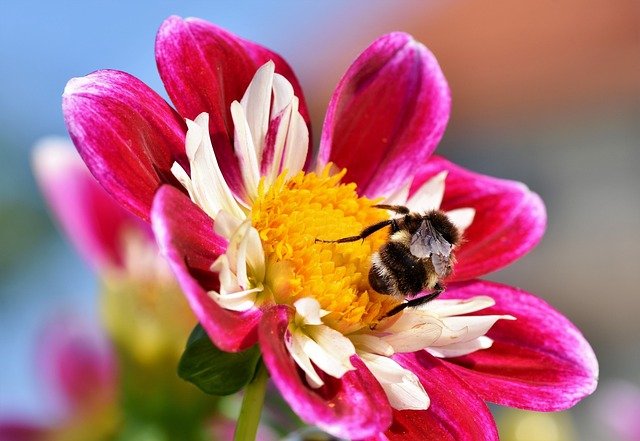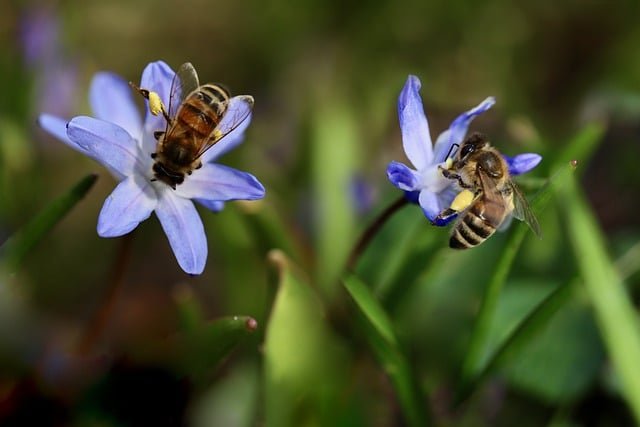Bees are vital pollinators that play a crucial role in our ecosystem. They are responsible for pollinating a significant portion of the world’s food crops, ensuring the production of fruits, vegetables, and nuts. Unfortunately, bee populations have been declining due to habitat loss, pesticide use, and disease. By creating a bee-friendly yard, you can contribute to the conservation of these essential creatures while enjoying the beauty they bring to your outdoor space.
Having a bee-friendly yard not only benefits the bees but also supports the overall health of your garden. Bees help increase pollination, resulting in higher yields and better-quality produce. Additionally, a bee-friendly yard attracts other beneficial pollinators, such as butterflies and hummingbirds, creating a thriving ecosystem.
Understanding the importance of bees in our ecosystem
Before embarking on the journey to transform your yard into a bee-friendly paradise, it is crucial to understand the significance of bees in our ecosystem. Bees are responsible for pollinating approximately 75% of all flowering plants and 35% of global food production. Without bees, many plants would struggle to reproduce, leading to a decline in food availability and biodiversity.
Bees not only play a role in food production but also contribute to the health of ecosystems. By pollinating plants, bees help create and maintain habitats for other wildlife. Their activities support the growth of diverse plant species, which serve as food and shelter for a wide range of animals.
Assessing your yard for bee-friendly elements
The first step in creating a bee-friendly yard is to assess your current outdoor space. Take a walk around your yard and observe its existing features. Look for areas that receive ample sunlight and areas that provide shade. Identify any potential sources of water, such as birdbaths or ponds. Assess the soil quality and drainage in different areas of your yard.
Consider the size of your yard and how much space you can allocate for creating a bee-friendly environment. Take note of any existing plants and their condition. By conducting this assessment, you will have a better understanding of your yard’s current state and how to enhance it to attract bees.

Choosing the right plants for a bee-friendly yard
One of the most critical aspects of creating a bee-friendly yard is selecting the right plants. Bees are attracted to a variety of flowering plants that provide them with nectar and pollen. Choose a diverse range of plants that bloom at different times throughout the year, ensuring a continuous food source for bees.
Opt for native plants whenever possible, as they have evolved alongside local bees and are well-suited to the region’s climate and soil conditions. Native plants also provide a sense of place and promote biodiversity by supporting other local wildlife.
When selecting plants, consider their size, color, and shape. Bees are particularly drawn to flowers that are blue, purple, white, and yellow. Additionally, choose plants with different flower shapes, as this will attract a variety of bee species that have distinct feeding preferences.
Providing water sources for bees
In addition to nectar and pollen, bees also require a water source. Provide a shallow dish or birdbath filled with clean water in your yard. Add floating objects, such as twigs or pebbles, to provide landing spots for the bees.
Ensure that the water source is regularly maintained and refreshed to prevent the growth of mosquitoes. Bees prefer shallow water, so keep the water level low and add fresh water frequently. By providing a water source, you are not only supporting the bees but also creating a beautiful feature in your yard.
Creating nesting sites for bees
Bees need suitable nesting sites to establish their colonies. Different bee species have specific nesting preferences, so it’s essential to provide a variety of options. Some bees nest in the ground, while others prefer hollow plant stems or small holes in wood.
To create nesting sites for ground-nesting bees, leave some areas of bare soil in your yard. Avoid tilling or mulching these areas as it can disrupt the bees’ nesting habitat. You can also place small piles of twigs or rocks to create additional nesting opportunities.
To attract cavity-nesting bees, drill small holes of various sizes into blocks of untreated wood. Hang these wood blocks in a sheltered location in your yard, such as on a fence or beneath the eaves of your house. You can also purchase or make bee houses specifically designed for these solitary bees.
Avoiding pesticides and harmful chemicals
To maintain a bee-friendly yard, it is crucial to avoid the use of pesticides and harmful chemicals. Pesticides can be toxic to bees and other pollinators, causing harm to their health and reproductive capabilities. Opt for natural pest control methods, such as companion planting, which involves growing pest-repellent plants alongside your desired plants.
If you must use pesticides, choose organic, bee-friendly alternatives that are specifically labeled as safe for pollinators. Apply them sparingly and follow the instructions carefully. It’s best to apply pesticides during the late evening or early morning when bees are less active.
It’s also important to avoid using chemical fertilizers and herbicides in your yard. These can contaminate the soil and water, harming not only the bees but also other wildlife. Instead, opt for organic fertilizers and natural weed control methods, such as manual removal or mulching.
Maintaining your bee-friendly yard
Once you have transformed your yard into a bee-friendly paradise, regular maintenance will ensure its continued success. Monitor your plants for any signs of pests or diseases and take appropriate action promptly. Remove any dead or decaying plant material to prevent the spread of diseases.
Continue to provide a water source for the bees, ensuring it remains clean and filled. Regularly inspect nesting sites and make any necessary repairs or replacements. Monitor the overall health and diversity of plants in your yard, taking note of any changes or issues that may arise.
Monitoring and observing the impact of your efforts
As you maintain your bee-friendly yard, take the time to monitor and observe the impact of your efforts. Keep a journal or take photos to document the different bee species that visit your yard. Note any changes in plant growth and the abundance of flowers.
By monitoring and observing, you can gain valuable insights into the effectiveness of your bee-friendly practices. You may discover new plant species that are particularly attractive to bees or identify areas that need improvement. This knowledge will allow you to continually enhance your yard and provide an even more inviting habitat for bees.
Conclusion: Enjoying a vibrant, bee-friendly paradise
Creating a bee-friendly yard is a rewarding endeavor that not only benefits bees and other pollinators but also enhances the beauty and productivity of your outdoor space. By understanding the importance of bees in our ecosystem, assessing your yard, choosing the right plants, providing water sources and nesting sites, avoiding harmful chemicals, and maintaining your yard, you can transform it into a vibrant, bee-friendly paradise.
Embrace the opportunity to observe the fascinating world of bees and the interconnectedness of nature. Enjoy the sight of bees buzzing amidst colorful flowers, knowing that you are making a positive impact on the environment. Start today and take the first step towards creating a bee-friendly paradise in your own yard.

